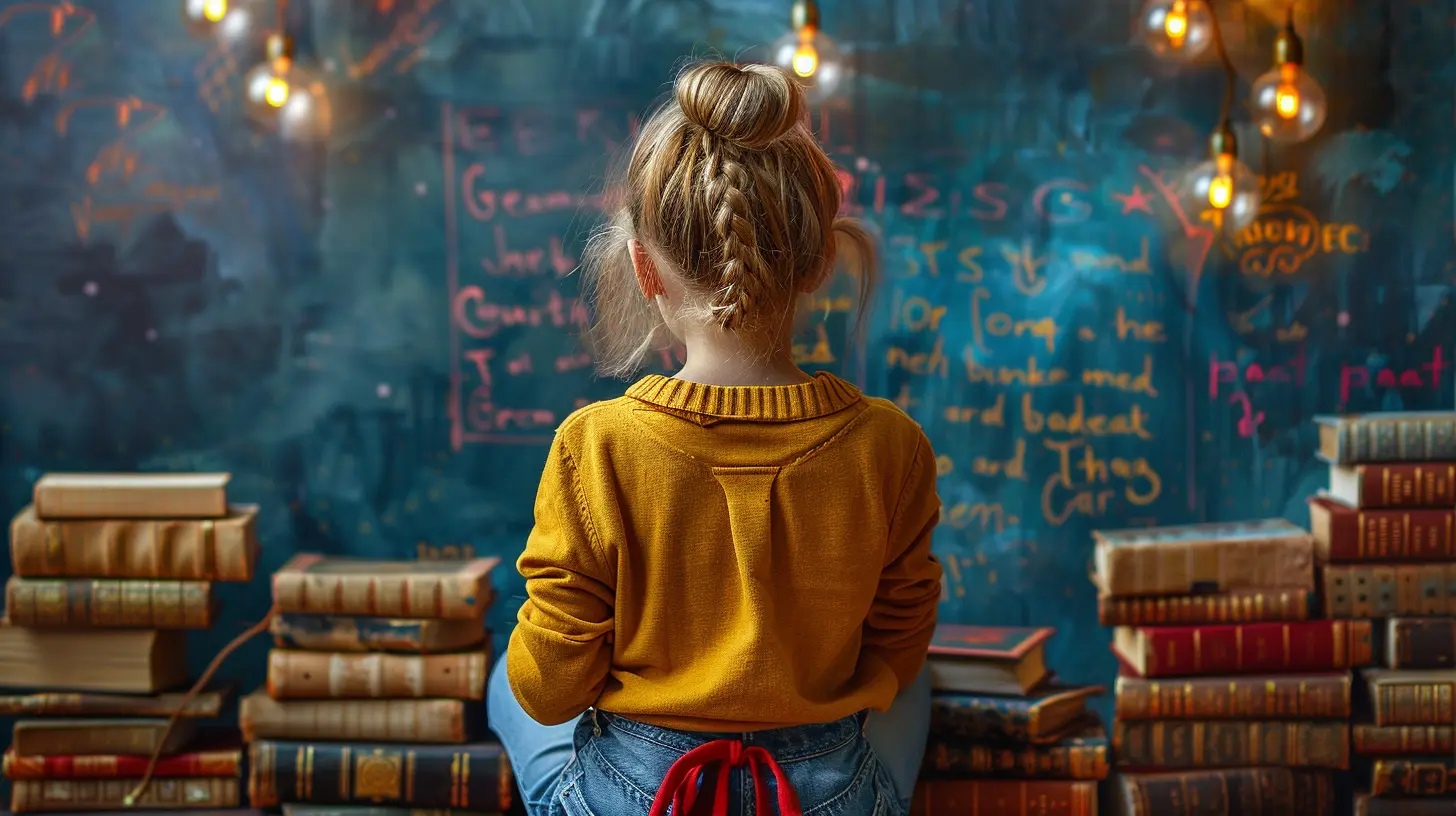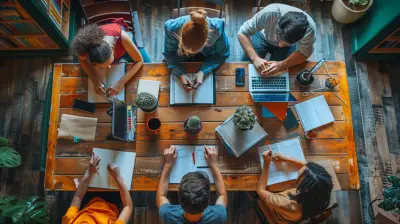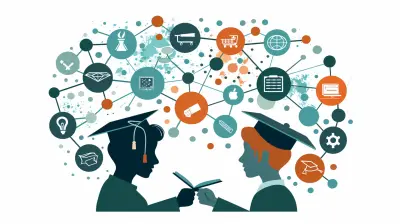How to Support Gifted Students with ADHD or Other Learning Disabilities
20 August 2025
Have you ever met a student who’s a genius at solving complex math problems but can’t sit still in class for more than five minutes? Or maybe you've seen a kid who writes the most imaginative stories but constantly forgets their homework? If so, you might have already crossed paths with a twice-exceptional (2e) student—someone who is both gifted and has a learning disability, like ADHD or dyslexia.
Supporting these students is not about choosing between their strengths or weaknesses. It’s a balancing act, like walking a tightrope while juggling. But when schools and families get the support system right, these students can thrive—not just academically, but emotionally and socially too.
Let’s break this down and chat about how we can create an environment where gifted students with ADHD or learning disabilities can truly shine.
What Does “Twice-Exceptional” Really Mean?
“Twice-exceptional” or 2e might sound like a label, but it represents a very real, unique group of students. These are kids who:- Perform at a gifted level in one or more academic areas
- Have a diagnosed learning disability, ADHD, autism spectrum disorder, or other challenges
They’re creative thinkers, problem-solvers, inventors—they just may struggle with executive functioning, attention, or specific academic tasks like reading or writing.
So, imagine having a turbo-charged engine but a wobbly steering wheel. That’s kind of what it feels like to be 2e. You can move fast and go far—you just need the right kind of support to steer properly.
The Challenges Gifted Students With ADHD or Learning Disabilities Face
These kids are often misunderstood. Teachers might notice their intelligence but get frustrated by their lack of focus. Parents may recognize their creativity, but worry about poor grades. The result? These students often fall through the cracks.Let’s look at some common challenges they face:
1. Masking of Abilities or Struggles
Sometimes, their giftedness hides their disabilities. Other times, the disabilities mask their giftedness. It’s a Catch-22. Teachers might see the disruptive behavior but miss the brilliant ideas behind it.2. Emotional Overwhelm
Think about it—imagine being capable of solving complex puzzles but constantly being told to “just sit still,” “stop fidgeting,” or “pay attention.” That disconnect can lead to frustration, anxiety, even depression.3. Social Struggles
These kids sometimes feel like aliens in a world that doesn’t get them. They might have unique interests (say, quantum physics at age 8) but struggle with making friends due to impulsivity or lack of social skills.4. Underachievement
Despite being highly capable, 2e students may perform below their potential because of organizational issues, inattention, or writing difficulties.
Why It’s So Important to Support 2e Students
When we don’t support gifted students with special needs, we lose out on incredible potential. These are the kids who could go on to invent life-changing technologies, write award-winning novels, or start their own groundbreaking companies.Think of them as diamonds in the rough. The brilliance is there—it just needs to be uncovered and polished.
How to Support Gifted Students With ADHD or Other Learning Disabilities
Now that we've explored the challenges, let's focus on solutions. Supporting these students requires intention, flexibility, and a whole lot of heart.1. Know the Student Beyond the Label
First off, throw out any preconceived notions. Every 2e student is different.Take the time to understand:
- Their strengths and interests
- Their specific learning challenges
- Their motivation style
- What makes them tick
Sit down with them, ask questions, let them be part of the conversation. You might be surprised what you learn.
2. Differentiate Your Instruction
One-size-fits-all learning doesn’t work here.Try differentiating by:
- Content: Let them explore topics they're passionate about.
- Process: Offer choices—visual aids, hands-on activities, audio recordings.
- Product: Instead of requiring the same project for everyone, allow variation—maybe a podcast, slideshow, or video.
This not only supports their learning style but keeps them engaged.
3. Use Strengths to Work on Weaknesses
Here’s a golden rule: Don’t separate their gift from their support plan. Use one to build the other.Example? If a student loves computers but struggles with writing, let them dictate essays using speech-to-text software and edit it through coding-style revisions. Boom—motivation meets language development.
4. Create a Supportive Environment
Structure and consistency are your best friends here—but so is flexibility.Try this:
- Use timers and visual schedules for time management
- Break tasks into smaller chunks
- Offer movement breaks (yes, even in high school!)
- Allow flexible seating – standing desks, wobble stools, bean bags—whatever works
5. Teach Executive Functioning Skills
Most kids aren’t born knowing how to plan, prioritize, or manage time—especially those with ADHD. So make these skills part of the curriculum.Teach them to:
- Use planners or digital task managers
- Break projects into steps
- Reflect on what worked and what didn’t
Treat executive functioning like any other academic subject. Practice makes progress.
6. Foster Emotional Intelligence and Self-Advocacy
Helping students understand and communicate their emotions is life-changing. Create space for:- Journaling or reflective activities
- One-on-one check-ins
- Discussions about how to ask for help, handle frustration, and celebrate progress
When students know themselves, they can speak up for their needs—and that’s a powerful tool.
7. Collaborate With Families and Specialists
No one knows a child like their parents or caregivers do. Work as a team:- Share insights regularly
- Collaborate on strategies
- Invite feedback
Also, pull in school psychologists, special educators, occupational therapists—each person brings a piece of the puzzle.
8. Offer Enrichment, Not Just Remediation
So often, interventions focus on what’s “wrong.” Let’s flip the script.Give these students access to:
- Gifted programs
- Advanced projects
- Passion-based learning
- Mentorships with experts in their areas of interest
Let them soar in their strength zones. This builds confidence and motivates them to tackle their challenges.
9. Adapt Assessment Strategies
Standard tests don’t always capture what 2e students know. Consider alternatives:- Oral presentations
- Open-book or untimed tests
- Portfolios
- Project-based assessment
Let them show what they’ve learned in a way that works for them.
What Does Real Support Look Like in the Classroom?
Let’s imagine “Alex.” He’s a 10-year-old gifted in science, fascinated by robotics, but has ADHD and dysgraphia (a writing disorder). In a traditional classroom, he fidgets, forgets directions, and struggles with written work. But with support, here’s what his day could look like:- He starts with a visual calendar and checklist to outline the day.
- He gets to build a robot in science class and documents his process through a video diary instead of writing notes.
- He uses speech-to-text software to draft a report.
- He earns a short movement break after every 20 minutes of focus.
- His teacher meets with him twice a week to review goals.
This is what meaningful support looks like. It blends strengths, supports challenges, and respects the whole child.
Encouraging Growth, Not Perfection
Here’s something to keep top of mind—these kids don’t need to be fixed. They need to be understood.Focus on growth, not perfection. Celebrate small victories. Model resilience. Remind them (and yourself) that progress isn’t always a straight line.
And remember: your patience, compassion, and flexibility can be the game-changer in a 2e student's life. You have the power to unlock their potential and help them see themselves not as “flawed” but as uniquely gifted learners with amazing, one-of-a-kind brains.
Final Thoughts
Supporting gifted students with ADHD or other learning disabilities isn’t about choosing one side of the coin. It’s about flipping the coin over—and realizing that the magic lies in understanding both sides at the same time.These kids don't fit the mold—and that's a beautiful thing. When we adapt our teaching, shift our mindset, and lead with empathy, we create space for them not just to survive school, but to love learning again.
They don’t need limits—they need launchpads.
all images in this post were generated using AI tools
Category:
Gifted EducationAuthor:

Zoe McKay
Discussion
rate this article
1 comments
Isaac McPhee
This article offers valuable insights into effectively nurturing gifted students with ADHD or learning disabilities, highlighting the importance of tailored support and understanding their unique needs. Great read!
September 10, 2025 at 2:51 AM

Zoe McKay
Thank you for your kind words! I'm glad you found the insights helpful in understanding and supporting gifted students with ADHD and learning disabilities.


